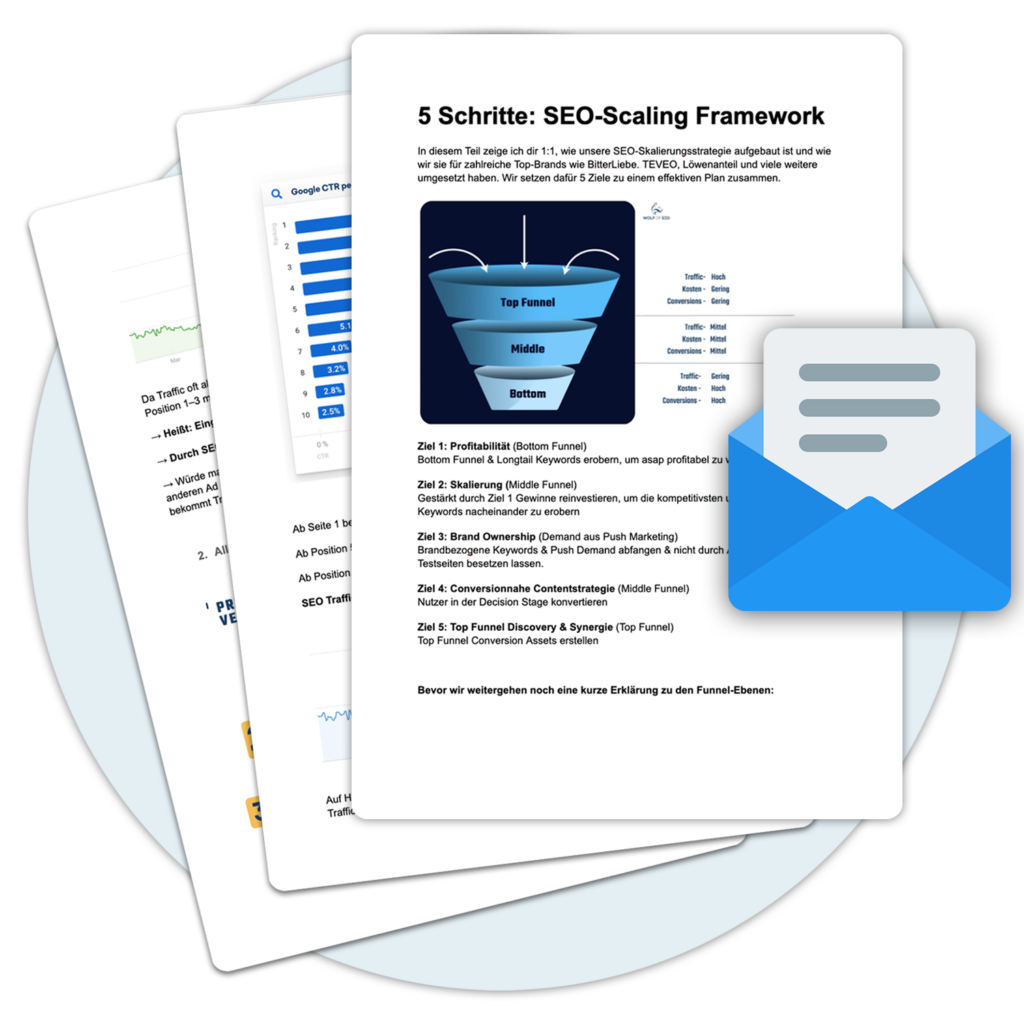1. introduction to URL parameters
URL-parameters play an important role in analyzing and tracking data in the Online Marketing. They allow us to provide additional information on a URL to be added to the Web analytics and tracking can be used. In short, a URL-parameter is a part of the URL, which contains certain information about the page, user or source.
A typical URL looks like this, for example: https://www.example.com/?utm_source=facebook&utm_medium=social&utm_campaign=summer_sale
In this case the URL-parameter utm_source, utm_medium and utm_campaign Part of the URL. They help us identify the source, medium and campaign through which a user arrived at the website.
URL-parameters can be used in various ways to control the Online Marketing more effectively. For example, they can be used in Google Analytics used to measure the success of advertising campaigns, or in the URL structure of online stores to identify the shopping cart or specific product filters.
1.1 What are URL parameters?
URL-parameter are additional information, which are linked to a URL (Uniform Resource Locator) can be appended to control specific functions or data. They are specified by a question mark (?) and the parameters in the form of key-value pairs. An example of a URL with parameter would be: https://www.beispielwebsite.de/produkte?kategorie=elektronik.
With the help of URL-parameters, various information can be transmitted, for example:
- Search terms: In a search query, parameters can be used to pass the search term or category.
- Language selection and location: By specifying parameters, users can set their preferred language or location.
- Filters and sorting: When displaying products, parameters can be used to filter according to certain criteria or to adjust the sorting.
URL-parameters are especially important for the Tracking and the Personalization of content are of importance. They enable website operators to analyze visitors' behavior and present them with customized content.
1.2 Reasons for using URL parameters
URL-Parameters are an important tool in the field of online marketing. They make it possible to convey specific information to a website and thus improve the user experience. There are several reasons why the use of URL-parameters makes sense:
- Labeling campaigns: Through the use of URL-parameters, marketing campaigns can be clearly identified and analyzed. For example, it can be determined how successful a particular online advertisement or newsletter was.
- Tracking of user behavior: With the help of URL-parameters, it is possible to precisely track the behavior of users on the website. For example, information about the user's origin (referrer) or the search terms used can be collected.
- Personalization of the website: By setting certain parameters in the URL are set, websites can be personalized. This means that users receive content tailored to them individually, based on their previous interactions or preferences.
Through the use of URL-This means that targeted information can be transmitted, campaigns can be analyzed, user behavior can be tracked, and personalized content can be offered. This helps to improve the effectiveness of online marketing and optimize the user experience.
2. procedure for retrieving URL parameters
To URL-parameters in your code, there are several ways to do this:
- Use of JavaScript: With JavaScript you can use the URL-parameters directly in your code. For this you can use the JavaScript-method
URLSearchParamsuse the parameter values from the current URL to extract. - Use of PHP: With PHP you can get the parameter values from the URL by calling up the functions
$_GETor$_REQUESTin the program. You can then access the parameter values like an array. - Use of server-side frameworks: If you are using a server-side framework such as Laravel or Flask, they often provide their own methods for URL-parameters. These methods are usually more user-friendly and provide additional features such as validation and cleaning of parameters.
It is important to note that URL-parameters are often used to pass user input to the server. For security reasons, it is therefore advisable to thoroughly check and validate the received parameter values before using them to prevent potential attacks such as SQL injections or cross-site scripting.
2.1 Retrieving URL parameters with JavaScript
If you use the URL-parameters of a web page with JavaScript there are several ways to do this. In this section we will look at some options.
The easiest way to create a URL to analyze, is to analyze the document.location.search-value to be used. This gives the part of the URL back, which comes after the question mark. For example, if the URL https://www.beispiel.de?utm_source=google&utm_medium=cpc would be the document.location.search-value ?utm_source=google&utm_medium=cpc be
To change the parameters from the document.location.search-value, we can extract various JavaScript-methods. One possibility is to use the method URLSearchParams which returns a listing of the parameters and their values.
A code example for the use of URLSearchParams could look like this:
const urlParams = new URLSearchParams(document.location.search);
const paramValue = urlParams.get('paramName');
console.log(paramValue);With this code we can change the value of a certain parameter named paramName and output it to the console. Of course you can use the value instead of console.log() also process elsewhere.
There are also other methods to URL-parameter with JavaScript such as the use of regular expressions. With regular expressions, you have more flexibility and control over parameter analysis, but also more development and maintenance effort.
2.2 Retrieving URL parameters with PHP
When you process website data with PHP, it is often necessary to specify the parameters of a URL to read out the parameters. This is especially useful if you want to use the parameters for personalizing content or tracking campaigns, for example. With PHP, you can easily access the parameters of a URL and use them in your code.
In order to URL-parameters with PHP, you use the $_GET Method. This method allows you to change the values of the parameters of a URL to read out the parameter. Here the name of the parameter is used as a key to access the corresponding value.
To illustrate this, let's consider a simple example. Suppose you have a website that displays products, and you want to remove the name of the selected product from the URL read out. The URL could look like this:
https://www.meinewebsite.de/produkte?produktname=iphone
To read the value of the parameter "productname" you have to use the following PHP code:
$roductName = $_GET['productName'];
echo "The selected product is: " . $productname;
In this example, you would output "The selected product is: iphone" on the page.
If a value for a parameter is not present, you can detect this with a simple check and react accordingly. For example, you could use a default setting or display an error message if the value is not present.
With the $_GET method in PHP provides you with a simple way to set the parameters of a URL and use it in your code. This is especially useful for various use cases, such as personalizing content or tracking campaigns. Use this feature to make your website even more effective and provide a better user experience.
3. implementation of URL parameters
The implementation of URL-parameters is an important step to improve the functionality of your website. With URL-parameters, you can submit data to your website to enable custom functionality.
There are several options, URL-parameter to implement. Here are some tips and tricks:
- Use a question mark (?) followed by the parameter name and value to pass individual parameters. For example: www.beispielwebsite.de?parameter1=wert1
- Use the ampersand (&) character to combine multiple parameters in one URL to hand over. For example: www.beispielwebsite.de?parameter1=wert1¶meter2=wert2
- Check existing URL-parameter with a conditional statement to set custom functions based on the passed parameters.
- Use the $_GET call in PHP to access the passed parameters and perform appropriate actions.
The implementation of URL-parameters opens many possibilities for personalized user experiences and advanced features on your website. For example, you can display specific content based on the passed parameters or create custom filters.
3.1 Use cases for URL parameters
URL-parameters are a convenient way to send additional information to a URL to attach. This can trigger specific content or actions on a web page. The following are some use cases for the use of URL-parameters in more detail:
- Campaign Tracking: By adding URL-parameters, marketing campaigns can be tracked precisely. For example, it is possible to find out which channels bring the most visitors to the website and which marketing activities achieve the best results.
- Personalization: With URL-parameters, personalized content can be delivered. Based on certain parameters, for example, individual product offers or country-specific content can be presented.
- Language selection: Through the use of URL-parameters can be used to control the language of a web page. This allows visitors to view the content of the page in their preferred language.
- Content filtering: By adding filter parameters in the URL can be used to hide or show certain content on a web page. This is especially useful for large databases or online stores with many products.
With URL-parameters, a wide range of use cases can therefore be realized. However, it is important to plan and implement them carefully to avoid possible negative effects on SEO.
3.2 URL parameter implementation examples
The implementation of URL-parameters provides a variety of ways to customize the content of a web page and provide personalized experiences. Here are some examples of how URL-parameters can be used in practice:
- Tracking Analysis: URL-parameters can be used to set the Traffic on a web page and track them. By adding a unique parameter to a link-.URL you can easily determine from which source the visitor came to your website.
- Segmentation: Through the use of URL-parameters, you can identify specific segments of your audience and display specific content to them. For example, you can use a parameter to distinguish social media visitors from your other visitors and present them with a personalized welcome message or offer.
- Language selection: If you have a multilingual website, you can use URL-parameters to identify the visitor's preferred language. This way, you can ensure that the visitor is automatically redirected to the correct language version of your website.
4. SEO Considerations and Best Practices for URL Parameters
SEO considerations for URL-Parameter:
When using URL-parameters, it is important to consider the impact on the SEO-Ranking Of your website to consider. Here are some best practices you should follow:
- Avoid duplicated contents:
Make sure that the URL-parameters do not generate identical content. Search engines consider this as duplicate content and may rank your page lower. - Use canonical tags:
Use the canonical tag to tell search engines which URL is the preferred version of your website. This prevents URLs with parameters from being separately indexed be
Best practices for URL-Parameter:
To ensure that your URL-parameters are SEO-friendly, follow these best practices:
- Choose meaningful parameters:
Avoid cryptic or unnecessarily long parameters. Instead, use parameters that describe the function or content of the page. - Use speaking values:
Use well readable values for your URL-parameters. This not only makes it easier for users to understand, but also improves the visibility of your page in search engines. - Do not use unnecessary parameters:
Avoid the use of parameters that do not add value to the user experience or that do not enhance the Crawl and indexing of your page negatively.
| URL-parameter | Description |
|---|---|
| utm_source | Specifies the source of the traffic. |
| utm_medium | Specifies the medium of the traffic. |
| utm_campaign | Indicates the campaign of the traffic. |
4.1 Effects of URL parameters on SEO
URL-parameters can have various effects on the Ranking of your website in the search engine results. Therefore, it is important to understand them and optimize accordingly.
When you URL-If you don't handle the parameters correctly, it can have negative consequences for your SEO. Search engines like Google may have difficulty indexing your website and recognizing the relevant content.
One possible effect is that your web page may change due to URL-parameters as duplicate content proves to be. This means that search engines may see your site as a copy of another site and may favor it in search results.
To avoid such problems, you should URL-parameters correctly and work with the canonical tag if necessary. This tag specifies which URL should be considered the main version of a page if there are multiple versions.
| Possible effects of URL-parameters on SEO: |
|---|
| Duplicate Content: URL-parameters can lead to duplicate content that negatively impacts your SEO efforts. |
| Indexing difficulties: Search engines may have problems to find your website with URL-parameters and identify the relevant content. |
| Preference for other versions: Search engines might find another version of your page with URL-parameters and display them in the search results pages. |
4.2 URL parameter handling in Google Search Console
URL-Parameter handling in Google Search Console is an essential tool for optimizing your website's performance on search engines. By properly managing the parameters in your website's URLs, you can ensure that search engines understand the structure and content of your pages accurately. This can lead to higher visibility and better rankings in search results.
5. summary and conclusion
In this article we have dealt with the topic "Get URL Parameter" and presented various possibilities of how to extract parameters from a URL can extract. We have learned that this can be done with both JavaScript as well as with PHP and, depending on the application, different approaches can be useful.
It is important to note that the extraction of URL-parameters is a basic function that is often needed for analyzing and processing data in web development. Therefore, understanding this technique can be very useful and lead to more efficient and focused work.
We have described the various methods for extracting URL-parameters in detail and discussed their advantages and disadvantages. We found out that the choice of the right method depends on various factors such as the programming language, the desired functionality and the individual requirements.
In summary, the extraction of URL-parameters is an important task in web development and there are different approaches to solve this task. It is important to understand the advantages and disadvantages of different methods and choose the right one according to individual requirements.
« Back to Glossary Index




 By
By 